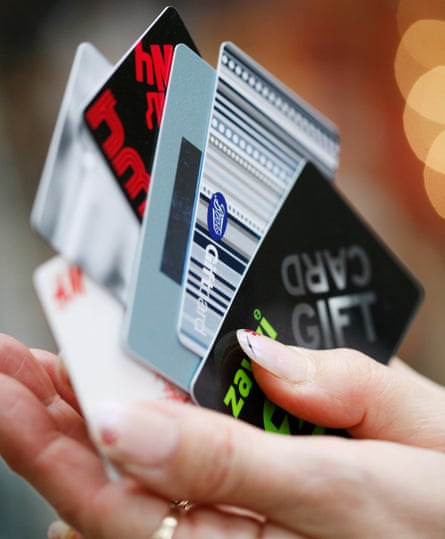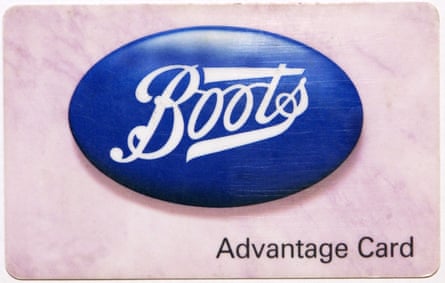Cash in on cashback
If you need to buy a particular item, switch to a new service, book a trip or take out insurance, look for a deal that comes with cashback. From TVs and T-shirts to baby milk and broadband, there are a vast number of products and services where you can get “free” cash.
Cashback returns a percentage of the cost of a purchase to you, usually after several weeks, so is similar to a discount after the fact. All schemes work in roughly the same way: the cashback company earns a commission when its members make a purchase from a retailer through their site. The cashback company takes a cut of this fee, then puts the rest in your account with it. Once you reach a certain threshold you can cash out, either by making a transfer to your bank account or PayPal, or by taking a range of gift card options.
One way to claim cashback on your online purchases is via free-to-join websites such as Quidco and TopCashback – probably the two biggest sites. Retailers usually offer cashback as a fixed amount or a percentage of the purchase price – anything from less than 1% to more than 20%.
 View image in fullscreenKeep your gift cards in your wallet or purse, ready to spend. Photograph: David Levene/The Guardian
View image in fullscreenKeep your gift cards in your wallet or purse, ready to spend. Photograph: David Levene/The Guardian
Quidco and TopCashback boast link-ups with thousands of brands including Amazon, Argos and Boots. As an example, when we looked this week, they were giving people who shop at the electrical retailer Currys the chance to get up to 16.5% and up to 15% of the price back respectively. Quidco says its average member earns £280 a year.
Another site rated by some is KidStart, aimed at parents and also free to join. With KidStart, the cashback you earn on your online shopping is paid into your child’s, grandchild’s, etc bank or building society savings account. Its partners include John Lewis, Waitrose and Boots. For example, H&M is offering 4% back on most purchases, so spend £100 there through KidStart, and your child’s savings will typically be topped up with £4.
The consumer body Which? says: “Be aware that you’ll need to use the cashback site’s link for your purchase to be counted.” It says cashback is not always guaranteed and in some cases could take months to reach your account.
It adds that it is still important to compare upfront costs first, as even the most generous cashback offers may not compensate for a high headline price. “Cashback is an added bonus if you’re set on buying an item anyway but not necessarily worth basing your purchase decision on.”
Spend gift cards
Lots of people will have received a gift card or electronic voucher this Christmas. If you were given a physical gift card, keep it in your purse or wallet, ready to spend. Don’t leave it in a drawer where it could end up being forgotten about. If it’s a digital gift card, you may be able to add it to your online account or mobile wallet.
Also, make sure you check the terms of use including – crucially – whether there is an expiry date.
Play your loyalty cards right
For shops you already use, it is increasingly becoming a no-brainer to sign up to retailers’ loyalty schemes. The Tesco, Sainsbury’s and Boots schemes are among those that have effectively become clubs and, if you are a member, you get products cheaper when you do your shopping online or in-store. Or, to put it another way, you often have to pay (a lot) more if you don’t scan a loyalty card at the till.
Tesco says you can save “up to £351 a year” with Clubcard prices compared with its regular prices, based on an analysis of its shoppers. When we visited a Tesco store this week, a Clubcard holder could get Pizza Express margherita pizzas for £3 each with a Clubcard – but the price was £6 if you didn’t use the loyalty scheme. Meanwhile, large bottles of Innocent smoothie were £3 with a Clubcard and £4.70 without.
Similarly, at Boots this week, Advantage Card holders could buy Nivea day and night creams for £10 each but those without a card were having to pay £19.99.
Some of the other retailer loyalty schemes such as My John Lewis are more about getting personalised offers and the odd little treat, and are arguably less worthwhile.
 View image in fullscreenThe Boots, Tesco and Sainsbury’s loyalty schemes are among those that have effectively become clubs. Photograph: Catherine Shaw/The Observer
View image in fullscreenThe Boots, Tesco and Sainsbury’s loyalty schemes are among those that have effectively become clubs. Photograph: Catherine Shaw/The Observer
However, some shoppers like ones where you can earn vouchers to use on shopping. For example, the Morrisons More scheme turns every 5,000 points earned into a £5 voucher.
Making cheaper prices only available to loyalty card members has become increasingly controversial, though. Last September, Which? said some retailers “are using potentially dodgy tactics on some of their loyalty offers, which can give the impression that savings are more substantial than they really are”. Problems it uncovered included regular prices being changed just before a loyalty card promotion or that were far more expensive than at rival stores. The Competition and Markets Authority is concerned and is due to launch an investigation into loyalty scheme pricing by supermarkets this month.
The other obvious point is that, in exchange for the discounts and rewards, you are giving away your personal data. That could prompt worries about what happens if the retailer suffers a data breach or sells your information to third parties. One thing’s for certain: if you have resisted signing up because you don’t want to give away your data, the big discounts for scheme members at some retailers are making it harder to justify opting out.
Cancel unused subscriptions
When did you last properly go through your bank statements and credit card bills to check you still use the services you’ve been paying for? Do you still read that magazine that turns up each month? Did you cancel your breakdown recovery service when you sold the car, or maybe you bought a new car that includes it for free? Why are you still paying £40 a month to be a member of a gym you now rarely or never go to?
From long-forgotten club subscriptions to no-longer-watched TV channels, it is easy to find you are still paying for things you no longer want or need. The smaller the sums involved, the easier they are to miss.
This can particularly be an issue if you moved home recently or your circumstances have changed significantly in recent months. Guardian Money is regularly contacted by people trying to get payments they forgot to cancel back from companies – often amounting to hundreds of pounds. Don’t be one of them.
Explore budgeting apps
Keep on top of your finances with a budgeting app that can give you an overview of your current and savings accounts at different lenders in one simple dashboard. They can also sort your spending into categories.
Some even help you save by combing through your bills, offering cheaper alternatives or areas where you can cut back.
 View image in fullscreenHave you considered using a budgeting app? Photograph: JGI/Tom Grill/Getty Images/Tetra images RF
View image in fullscreenHave you considered using a budgeting app? Photograph: JGI/Tom Grill/Getty Images/Tetra images RF
For example, the Emma app is free in its standard form but £4.99 a month if you want to upgrade to Emma Plus. The free version allows you to connect up to two bank accounts, so you can track your finances and set up budgets.
Plum is another popular money management and budgeting app that offers a free basic service and various paid-for options.
Meanwhile, the HyperJar app is slightly different as it includes a prepaid card. You can load money on to the card and then allocate it to different spending areas in your life such as groceries and transport.
Turn off retailers’ notifications
Retailers are itching to get you to download their apps, often incentivising you with the promise of a one-off discount. Sign up for push notifications, too, they say, as this will keep you informed about the status of your order, etc. But they can also send you prompts to spend: special deals you have to act quickly for, suggestions about must-buy items at times they know people are primed to respond.
The easiest way to resist is to switch them off. Go to either the app or the main settings section of your phone and do it. Then go through your emails and unsubscribe from all the companies you signed up with to get discounts in the past. If you really need something, you can go to them.
Make sure insurers don’t auto-renew you
Have you ever been convinced that you told your car or home insurer not to auto-renew you at the end of the policy term, only to find that somehow the company did exactly that? With the advent of online policy management, it is now super-easy to make sure that box is unticked. It could save you a packet come renewal time as you shop around for next year’s cover. Alternatively, call up and clarify the position.
While we are talking about insurance, if you signed up to cover your white goods, seriously ask yourself whether paying £18 a month for washing machine breakdown cover when you can buy a new model for £250 is good value. In most cases, it isn’t.
What about energy bills?
Normally at this time of year we would be advising you to make sure you are on a cheaper energy deal than your supplier’s standard variable tariff.
However, such is the current state of the energy market, that is probably exactly where you want to be. All suppliers’ prices are capped by Great Britain’s regulator, and with predictions that prices will fall by 14% in April, it might be worth checking before locking in to a fixed-price deal.
 View image in fullscreenEnergy suppliers’ prices in Great Britain are capped by the regulator. Photograph: Peter Dazeley/Getty Images
View image in fullscreenEnergy suppliers’ prices in Great Britain are capped by the regulator. Photograph: Peter Dazeley/Getty Images
Check your home for heat leaks
In most people’s homes, most of the heat leaks out from a few poorly insulated or damaged areas. A thermal imaging camera will show you exactly where your home is allowing the heat to escape.
In plenty of areas it is possible to borrow one for free, so you can find where to target your energy-saving efforts without any upfront cost.
Transition town groups – communities working to promote sustainability and cut emissions – often have a free camera loan scheme for local people.
Once you have identified the problem areas, the solution can be as easy as applying some cheap insulation tape or similar to the problematic area. Who doesn’t want to be warmer and pay less?
 View image in fullscreenA thermal camera shows heat loss in a row of houses. Photograph: Leon Neal/Getty Images
View image in fullscreenA thermal camera shows heat loss in a row of houses. Photograph: Leon Neal/Getty Images
Pay less for medicines
If you are someone who generally needs a few prescriptions each month – and you have to pay for them – have you looked into buying a prepayment certificate? A prescription in England costs £9.65 an item, and there are savings to be made if you have to pay regularly.
The NHS prescription prepayment certificate (PPC) is available for three months or 12 months. The three-month version costs £31.25, so you will save money if you have to buy more than three in that time. The 12-month PPC costs £111.60 – which can be paid monthly or as a lump sum – and saves you money if you need more than 11 prescriptions during that time. If you need hormone replacement therapy drugs, an HRT PPC is £19.30 for a year.
You can apply for a PPC online and get it by email, or buy one at some pharmacies.
All prices and product details correct at time of writing





